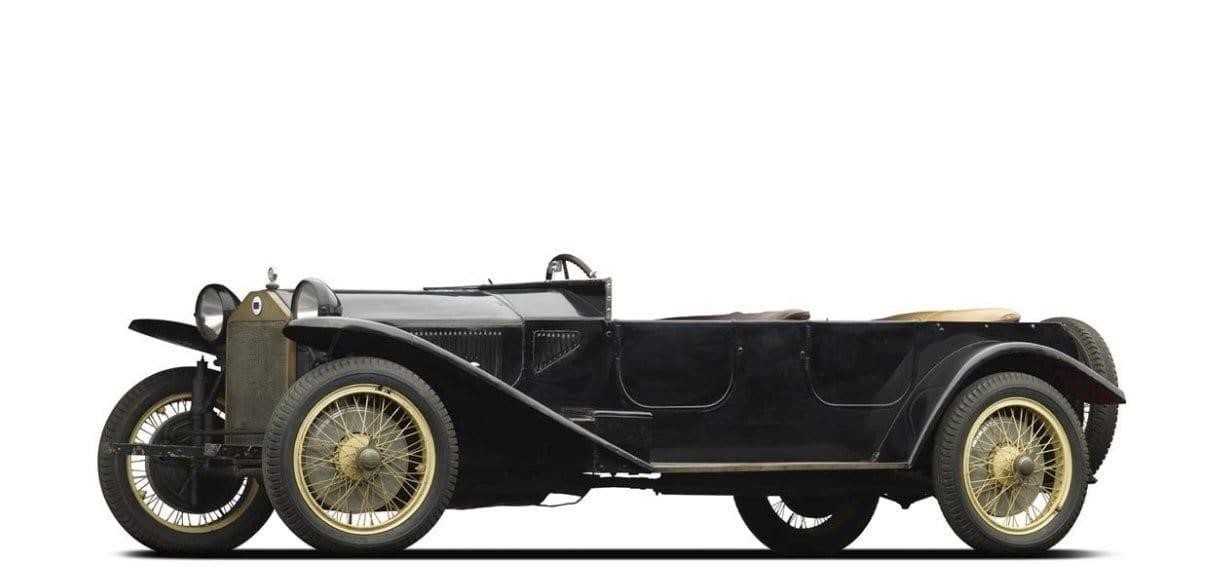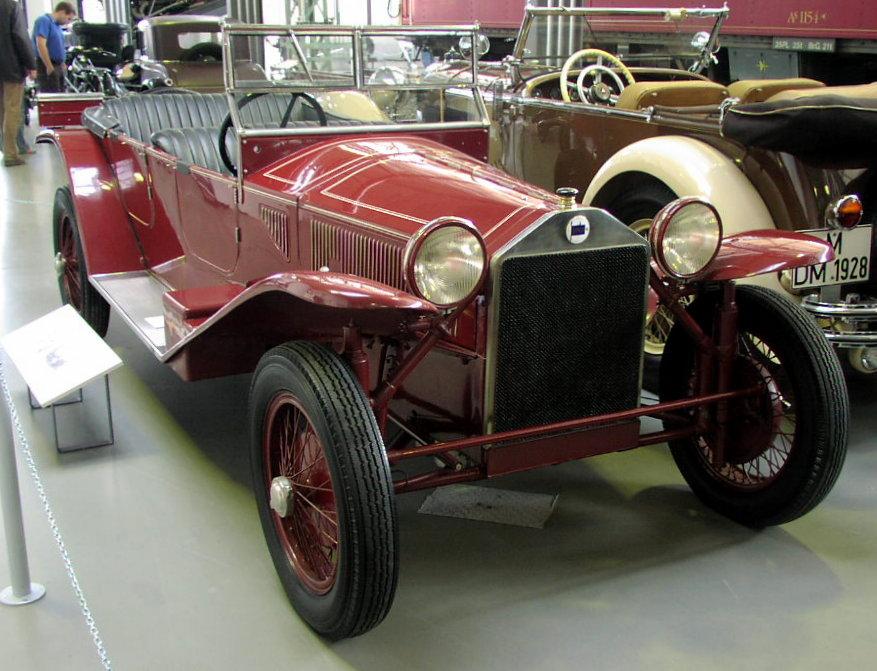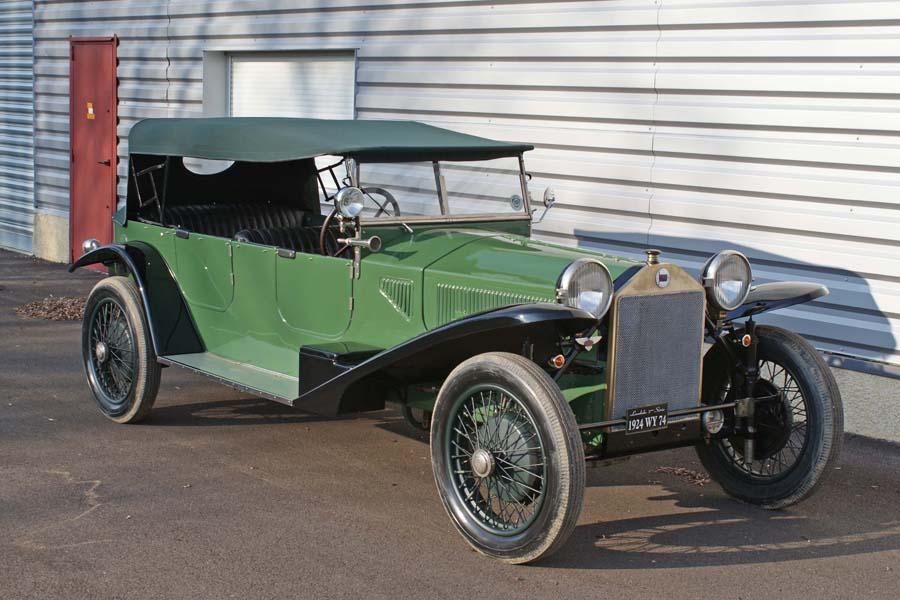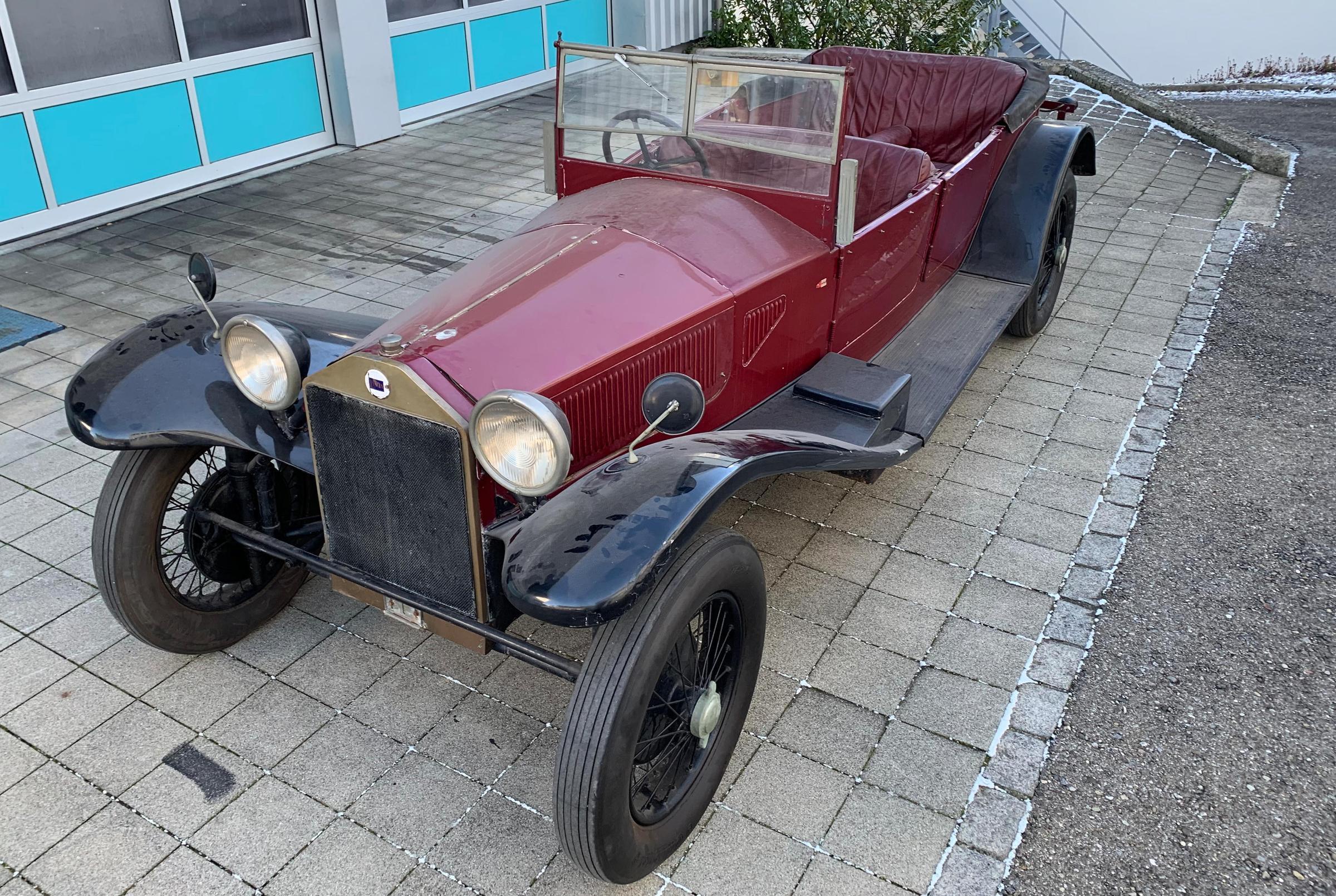1924 Lancia Lambda

The descriptions of the Classic Cars in the Directory were partly generated or supplemented with the help of artificial intelligence (AI). The content may occasionally not always be entirely accurate or factually correct despite careful checking.
The Lancia Lambda, introduced in 1922, was a ground-breaking car that cemented Lancia’s reputation as a high-end manufacturer of innovative, technologically-advanced vehicles. A perfect example of Lancia’s engineering expertise, the Lambda featured a unique ‘Sliding Pillar’ independent front suspension system that was significantly ahead of its time.
Under the hood, the Lancia Lambda boasted a powerful V4 engine with a capacity of 2.1 litres, producing 47 horsepower at 3,300 rpm. This four-cylinder engine offered smooth and effortless acceleration, with a top speed of around 80 miles per hour.
The Lambda’s advanced suspension was a key component in its success. The innovative design featured a central pillar between the front wheels and a sliding axle that could absorb bumps and road irregularities. This provided superior stability and handling compared to other contemporary cars, and made the Lancia Lambda a true pleasure to drive.
The Lambda's chassis was also highly advanced for its time. Its construction utilised very thin steel sheeting, welded and then lightened by drilling out large round holes, giving it a surprising lightness that contributed to excellent handling and performance. Additionally, the bodywork was crafted from lightweight aluminum, which further reduced the car’s overall weight.
Another key aspect of the Lancia Lambda's design was its aerodynamics. The car's sleek and streamlined body sat low on its chassis with a curved roofline that contributed to an impressive drag coefficient. This design helped to reduce wind resistance and increase fuel efficiency, allowing for greater mileage from the fuel tank.
The Lancia Lambda was not without its luxuries, either. The interior boasted comfortable leather seats and a wooden dashboard with a full range of gauges, including speedometer, tachometer and oil pressure gauge. This allowed drivers to keep track of the car's performance and make adjustments on-the-fly.
Overall, the Lancia Lambda was a technological tour de force that set new standards in automotive engineering. Its sophisticated and groundbreaking design contributed to the Lancia Lambda's status as a true classic, and an enduring favourite among collectors and enthusiasts alike.
Milestones
- Introduction of the Lancia Lambda model in March 1923 - First prototype unveiled at the Paris Motor Show in October 1922 - Introduction of the Lambda first series (Type 216) in 1924 - Lambda's innovative design featuring a monocoque chassis and V4 engine - Lambda's first high-speed endurance test in 1924, where it carried out 4,000 km in 4 days at an average speed of 75 km/h - Achieved numerous racing victories throughout the mid-1920s - First Lambda series production ended in 1928 with a total of around 11,000 units produced - Continued development of the Lambda platform resulted in successive series through the 1930sTechnical
- The Lancia Lambda was a luxury car produced by Lancia between 1922 and 1931 - It was the first car to feature a fully independent suspension system - The Lambda was powered by a 2.1 liter V4 engine with overhead camshaft - This engine produced 49 horsepower at 3,500 rpm - The car had a three-speed gearbox with sliding mesh synchromesh on second and third gears - It was capable of a top speed of approximately 78 mph (125 km/h) - The Lambda had a four-wheel braking system with hydraulic operation - The car featured a steel monocoque body construction, which was very innovative for the time - The Lambda was available in multiple body styles including a sedan, touring car, and sports roadster - It was a very successful vehicle for Lancia, with over 11,000 units produced during its nine-year production run.


